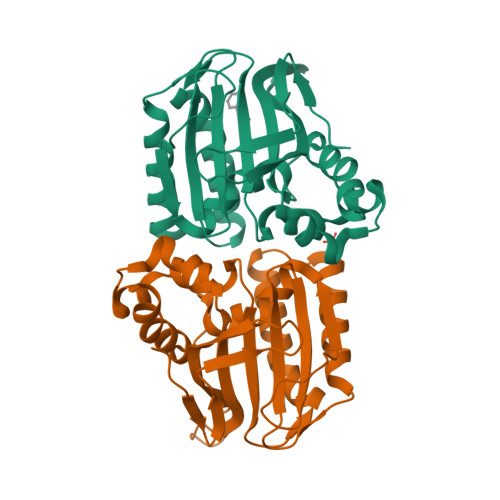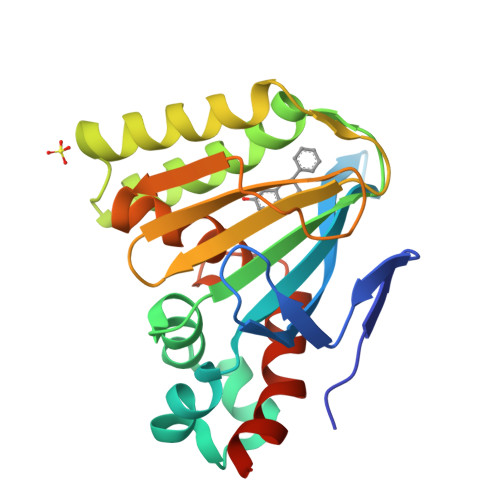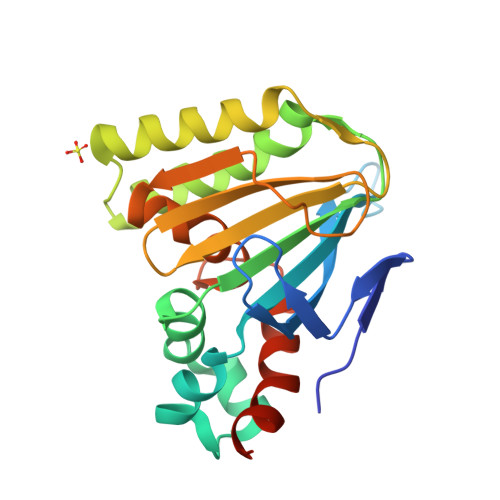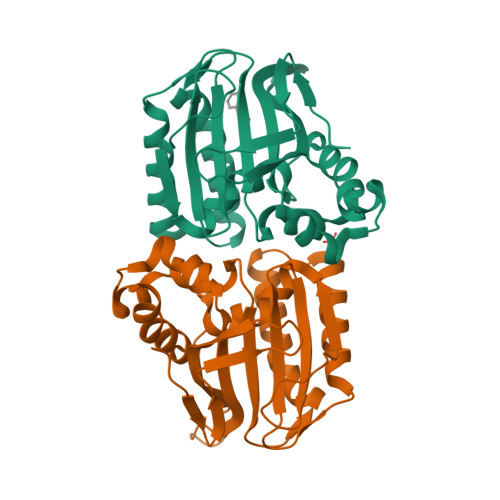Reaction mechanism of chalcone isomerase. pH dependence, diffusion control, and product binding differences.
Jez, J.M., Noel, J.P.(2002) J Biological Chem 277: 1361-1369
- PubMed: 11698411
- DOI: https://doi.org/10.1074/jbc.M109224200
- Primary Citation of Related Structures:
1FM7, 1FM8, 1JEP - PubMed Abstract:
Chalcone isomerase (CHI) catalyzes the intramolecular cyclization of bicyclic chalcones into tricyclic (S)-flavanones. The activity of CHI is essential for the biosynthesis of flavanone precursors of floral pigments and phenylpropanoid plant defense compounds. We have examined the spontaneous and CHI-catalyzed cyclization reactions of 4,2',4',6'-tetrahydroxychalcone, 4,2',4'-trihydroxychalcone, 2',4'-dihydroxychalcone, and 4,2'-dihydroxychalcone into the corresponding flavanones. The pH dependence of flavanone formation indicates that both the non-enzymatic and enzymatic reactions first require the bulk phase ionization of the substrate 2'-hydroxyl group and subsequently on the reactivity of the newly formed 2'-oxyanion during C-ring formation. Solvent viscosity experiments demonstrate that at pH 7.5 the CHI-catalyzed cyclization reactions of 4,2',4',6'-tetrahydroxychalcone, 4,2',4'-trihydroxychalcone, and 2',4'-dihydroxychalcone are approximately 90% diffusion-controlled, whereas cyclization of 4,2'-dihydroxychalcone is limited by a chemical step that likely reflects the higher pK(a) of the 2'-hydroxyl group. At pH 6.0, the reactions with 4,2',4',6'-tetrahydroxychalcone and 4,2',4'-trihydroxychalcone are approximately 50% diffusion-limited, whereas the reactions of both dihydroxychalcones are limited by chemical steps. Comparisons of the 2.1-2.3 A resolution crystal structures of CHI complexed with the products 7,4'-dihydroxyflavanone, 7-hydroxyflavanone, and 4'-hydroxyflavanone show that the 7-hydroxyflavanones all share a common binding mode, whereas 4'-hydroxyflavanone binds in an altered orientation at the active site. Our functional and structural studies support the proposal that CHI accelerates the stereochemically defined intramolecular cyclization of chalcones into biologically active (2S)-flavanones by selectively binding an ionized chalcone in a conformation conducive to ring closure in a diffusion-controlled reaction.
Organizational Affiliation:
Structural Biology Laboratory, The Salk Institute for Biological Studies, La Jolla, California 92037, USA.






















